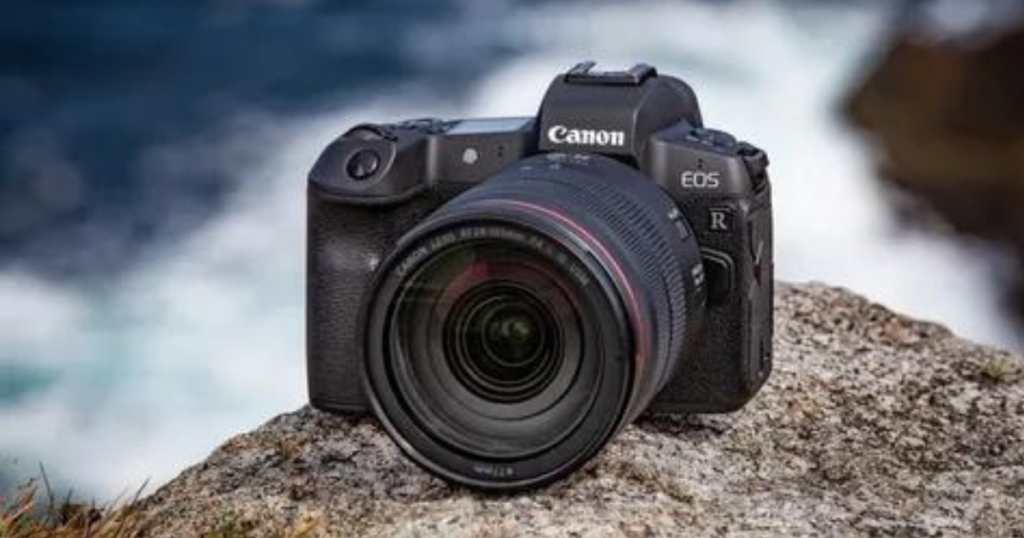Since when initially evaluated the Canon EOS R5 in August 2020, we’ve seen many changes in the camera world. Here you read about Canon EOS R5 Review that The EOS R5 is still Canon’s best mirrorless camera. Has it already been eclipsed by the arrival of the Sony A7S III and A1 and Canon’s response with EOS R5 software upgrades and the introduction of the Canon EOS R3?
In summary, if the video shooting is your main concern, you should test the Canon EOS R5 in scenarios that closely resemble your daily job. The Sony A7S III may be better suited to long-shoot shooting. But suppose you think of the Canon EOS R5 as a stills camera to shoot HD video. In that case, you’ll never have to worry about overheating.
The Canon EOS R5 is an excellent camera for still photographers. With its next-generation autofocus technology, excellent image quality, and quick 12fps/20fps continuous shooting, this camera is equally at home shooting news stories at nightfall.
A recent firmware upgrade included the Canon Log 3 (or C-Log 3) format to assist its footage in fitting into cinematic productions. Smooth shots may be achieved without a gimbal with stabilized RF-mount lenses and in-camera image stabilization (IBIS).
Canon EOS R5: Release Date and Pricing
The Canon EOS R5 release date was July 30, 2020, for $3,899 (£4,199/AU$6,899).
Initially hard to get, with demand outstripping supply for a few months, the EOS R5 is now readily accessible globally.
Of course, that’s a significant investment, but it’s comparable. In most places, it’s not much more than the lower-resolution, 4K-only Sony A9 Mark II and the Sony A7S III. It’s close to the original Canon EOS 5D Mark IV launch price of $3,499 / £3,599 / AU$5,060.
Is the Canon EOS R5 Expensive? Yes. Unjustified? Doubtful.
Canon EOS R5: Design and Use
The Canon EOS R5 isn’t a game-changer in terms of design. But, considering the Canon EOS R5’s usability, that’s not a terrible thing.
The EOS R5 is nearly equal in width and height to the Canon SL2, except three inexplicable millimeters in depth and 70g in weight.
Also, the EOS R’s touch bar is gone, likely a reflection of its tepid response. It’s been replaced by a hefty, knurled joystick for accessing autofocus points and menus, similar to other Canon high-end cameras.
Canon’s deft touch when creating quick and straightforward cameras to operate is on full display. Along with the four-way joystick, which makes navigating menus and selecting focusing points a pleasure. There’s a click-wheel on the rear, a dial below the shutter button, and a ring surrounding the mode dial.
Remember that RF-mount lenses include a control ring, so setting up the EOS R5 is simple. The R5 is easy to master if you’ve used another Canon camera before. The menus are responsive, straightforward, and powerful, whether you’re a power user or new to photography.
A square display on the camera’s right shoulder shows your current shooting data. That keeps the rear monitor off between shots, and the secondary display has a manual backlight. And the 3.15in touchscreen monitor with 2.1MP resolution is excellent. It’s also very-angle for video.
But the electronic viewfinder. Only the Sony A7S III and A1 EVFs have a higher resolution EVF (9.44 million pixels). While the R5 only has 5.76 million pixels, we couldn’t tell it apart from standard DSLR optical viewfinders in usage.
To discern whether an image with a shallow depth of field is genuinely focused is no longer an issue with mirrorless cameras. It’s easy to determine, and focus peaking in manual focus mode makes the R5 a breeze to operate.

Canon EOS R5: Specs and Features
On paper, the EOS R5 seems like the most excellent hybrid mirrorless camera. It produces 8,192 x 5,464 resolution files that average around 60MB apiece.
That implies shooting 1.2GB per second with the R5’s fastest continuous motor setting. In other words, plan for additional storage in your camera and at home.
Regarding storage, the R5 has both a standard SD card and a CFexpress port. You can either shoot to two cards for real-time backup or shoot raw data to one card and JPEGs to the other.
Canon’s DIGIC X processor drives it all. It’s the same chip used in the powerful 1D X Mark III, and it kept everything running smoothly while our EOS R5 ate light and churned data.
Canon’s first camera with in-body image stabilization and a new sensor type (IBIS). Combining the RF mount’s high data throughput with a lens’ image stabilization can provide up to eight stops of image stabilization in some situations.
You get all the mod cons and more. Sure, there’s WiFi, but it’s 5GHz instead of 2.4GHz. With the built-in FTP client, press photographers may upload photographs to distant sites as they shoot.
The EOS R5’s new battery, the LP-E6NH, has around 14% greater capacity than the somewhat earlier LC-E6N. It should be noted that the earlier Canon battery type is still compatible with the R5. The R5 may also be charged through Power Delivery via its USB-C connector, eliminating the battery’s need.
When the mode selection is set to video, the performance skyrockets. 4K, of course, but with up to 120fps and raw shooting options.
These numbers only tell part of the video picture. Canon had to adjust expectations by releasing anticipated recording duration for each of the EOS R5’s settings. This data is shown in the table below.
Canon EOS R5: Autofocus
The Canon EOS R5 autofocus is near-miraculous. Human faces are easily detected, even when moving quickly forward or backward through the picture. Subject detection and tracking are excellent.
In our wildlife test, the R5 detected and tracked non-human eyes and faces in challenging conditions.
Focusing on the sensor is done by a new version of Dual Pixel CMOS autofocus seen in the R5. That lets you pick from 5,940 AF points spread over the sensor’s horizontal and vertical dimensions.
You may use the joystick or drag your thumb over the touchscreen panel to cut the sensor into huge autofocus zones or tiny individual autofocus points. The R5’s autofocus is fantastic after you’ve chosen a zone.
It presently recognizes dogs, cats, and birds, but it isn’t blind to additional species. We’re excited to see where Canon takes this autofocus technology, but the EOS R5 is off to a great start.
Canon EOS R5: Video Quality and Performance
Excellent video performance. On a half-day documentary shoot (see above), we captured nearly 240GB of 4K video for a little over 55 minutes.
The first 38 minutes were shot in 4K, All-I, 25fps, 10-bit Canon LOG, and the rest (just under 17 minutes) at 50fps, All-I, and LOG. The shoot took place on the hottest day of the year, with a pleasant 32-degree temperature—no overheating warnings.
Canon claims the R5 can shoot for 35 minutes at 50/60fps before overheating, recovering at a rate of one shootable minute every minute of cooling. Not perfect for 4K and 60fps documentaries, but for 24 or 25fps films with a few 60p slow motion segments. The R5 might be used rather actively without overheating. 4K video at 25/30fps with no heat constraint, Canon says.
With the overheating accusations set aside, it’s a lot more informative and enjoyable to look at the Canon EOS R5 results. 4K video is stunningly crisp, and the LOG files we captured were very gradable.
Note: The latest firmware update, 1.3.0, includes the extremely useful Canon Log 3 (C-Log 3) format, which allows for a wide dynamic range and fits neatly into workflows that incorporate footage produced on Canon EOS Cinema cameras. The update also adds slo-mo 120p recording for Full HD, although the 30-minute video recording restriction remains.
The EOS R5 can generate relatively smooth tracking shots without a gimbal with stabilized RF-mount lenses and in-camera IBIS. The RF 15-35mm F2.8L IS USM, RF 24-70mm F2.8L IS USM, and RF 70-200mm F2.8L IS USM all have silent tracking autofocus. The EOS R5 might be an excellent tool for single-crew shooters or those capturing BTS (Behind the Scenes) or B-roll.
A brief reminder: if you’re shooting 10-bit files, you’ll need a good editor. Those who are currently utilizing BlackMagic’s free version of Resolve will need to upgrade. On an Adobe Creative Cloud membership, we edited and graded using Premiere Pro.
Canon EOS R5: Image Quality
The R5 produces outstanding photos for the price. Amazingly, up to ISO 4000, there should be no issues. Photographers who want to create art prints may be wary of fine-grained speckling in their photographs if they push the settings too far.
The R5 will shoot ISOs up to 102,400 for those devoted to capturing once-in-a-lifetime moments. We shot at ISO 51,200, and while the pictures were grainy, there was no color shift and lots of detail.
Photographers will appreciate the EOS R5’s ability to capture stunning, high-resolution photographs in low light while also shooting proper shutter speeds at the camera.
Canon EOS R5: Quick Review
Pros
- Tried-and-tested form factor
- Very talented still camera
- Excellent autofocus skills
- Longer battery life
Cons
- Expensive
- Dual memory cards will require an investment.
- Recording limits for video shooting
Canon EOS R5: VERDICT
The EOS R5 is Canon’s best-ever stills camera and an extraordinarily versatile tool. While it lacks video adaptability, it is still an intriguing hybrid choice, provided you understand its limits. The price is the main deterrent for most of us.




